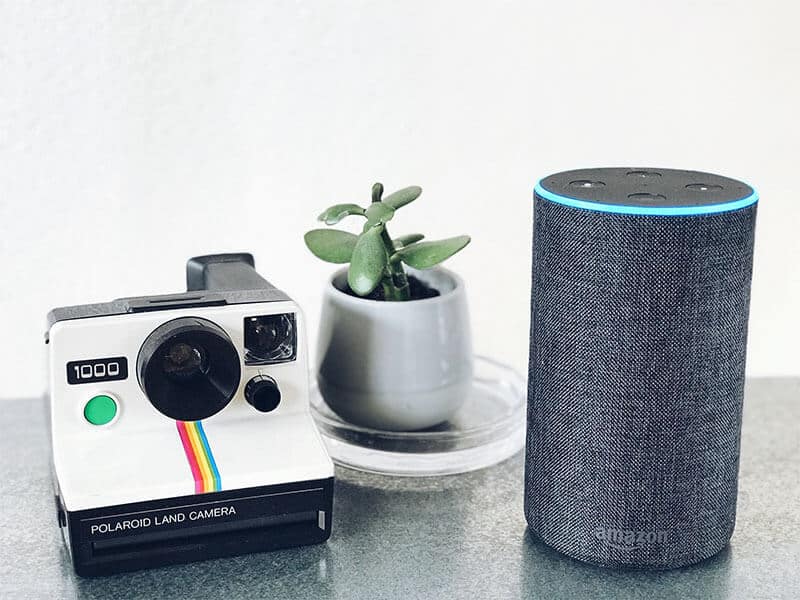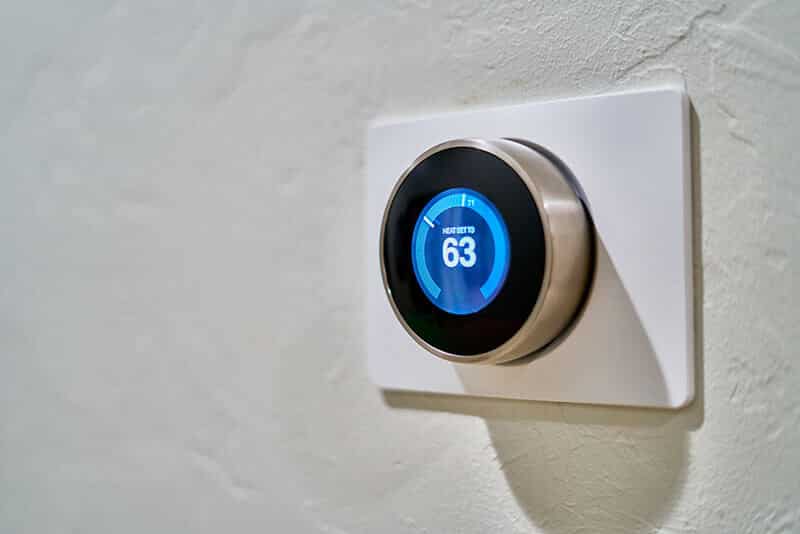The Best Smart Home devices of 2020

It might have seemed like ages for many of us to get the age of technology working for us with as much ease as it does now. The smart home has finally arrived, and it is just what you need to turn your “lame” house into a smart hub. You can now use voice commands or simple clap patterns to turn up the thermostat, turn on the lights, lock the doors, and even play music in your home.
Home automation means all your devices, including clocks and hot water heaters or even cooking utensils, can communicate and take commands from you. That is all now possible thanks to the internet of things.
You can automate almost anything in your home, including window shades and pet feeders, and control them with a simple voice command. It is relatively inexpensive to set up some appliances like automating a lamp to turn on or off at a clap. However, you may need a higher investment of both money and time to automate other advanced appliances like surveillance cameras.
There is a wide array of home product categories that you can automate from temperature and lights to locks and home security. We have come up with a list of devices that are, in our opinion, the best smart home devices in various categories that you can get in the market. However, before we plunge into the features, it is essential to know how to choose the best smart home’s setting for your home.
How to choose the best smart-home ecosystem
Before moving ahead to assemble your smart home, it is good to decide on the type of ecosystem you want to begin with. There is quite a handful of them out there, including Google Home/Google Assistant, Apple HomeKit, Samsung SmartThings, ZigBee, the Amazon Alexa platform, IFTTT, Z-Wave, and more.
You might already see the wide variety of products available in the market. Our guide will help you consider the critical factors when putting together your smart home.
You will also need to consider the existing ecosystem. For instance, Android users may be better suited with the Google Home than Apple’s HomePod or Amazon Echo.
The fact that smart-homes have become as easy to install as setting up a smart speaker and can be as complicated as creating intricate networks of connected devices is simply mind-blowing. It is really up to you to decide how much you would like to invest in personalizing your how to your comfort level. The advantage of more straightforward and cheaper smart devices is that you will have very little trouble setting up connections in a new home.
Besides concentrating on the price of the devices, customers must consider whether the devices are compatible with most phones tablets and smart speakers. Since smart-homes depend on systems being able to interconnect with each other, you might want to check the compatibility before stocking it up on your cart. The shopping experience is increasingly daunting due to the rise in the number of new products in the market.
The best Voice Assistant
The first system you will want to install in your home is a voice assistant that can help you control various smart devices in your home with your voice. You get to choose between an audio controlled and smart display assistants. In the latter, you can interact with your assistant visually while in smart speakers, you can use your voice as a command for your smart devices.
The Amazon Echo Family

The Amazon Echo features the popular Amazon virtual assistant, Alexa. The Amazon Echo 2nd Generation is a relatively affordable Bluetooth controlled device that will satisfy your smart-home needs. The speaker plays your favorite music, makes calls, sends text messages, sets alarms, and answers questions by connecting with Alexa. It can also integrate with other systems in your home. For instance, you can connect it to your sprinklers to automatically switch them on or off without leaving the comfort of your house.
The speaker satisfactorily fills the room with 360° audio. It has noise cancellation technology, which makes sure that you can be heard from any room in your house. With the Amazon Echo, you can order a pizza, turn on your TV, and create a shopping list without having to take a step from your couch. In addition, there are compatible gadgets that let you customize the aspects of your home, such as turning down the lighting and the thermostat.
The Amazon Echo 3rd Generation features excellent sound quality to fill your home with quality music from streaming services. While the Echo 2 retails for $90, the Echo three is available at $100. That is accounted for in the variety of colors it comes in and the sound quality.
If you are looking for a more affordable smart speaker, the Amazon Echo Dot with Clock, which retails at $60. The speakers are not quite as powerful as those of the Amazon Echo, but it does everything the Echo can do. It also features an LED display on its front face, which displays time, weather, or a timer.
One of the significant reasons the Amazon Echo devices should be among the first to install into your smart-home is that they are easily compatible with most of the products you already own or are likely to buy. They are also available at affordable prices
Pros
Integrates smoothly with the Philips Hue bulbs and other smart-home devices (you will need a separate hub to use the Echo 2 smart-home capabilities)
It comes with convenient alarms and timers that enhance multitasking capabilities
You can turn on music or lights in a specific room through a group set up in the Alexa app which is excellent flexibility.
Cons
The Echo needs am adapter to work because it does not have wireless charging or a rechargeable battery.
The Echo 2 device sometimes mishears, and you have to repeat the command. She will usually say, “Hmm, I don’t know” a lot.
The best smart displays
Smart displays, unlike smart speakers, let you interact with your assistant on either a touchscreen display or a remote-controlled screen.
Google Nest Hub Max
The Nest Hub Max is a larger version of the Google Home Hub. It features a front-facing camera that can be connected to the Google-owned Nest platform to serve as a smart-home camera. It combines a smart speaker with an excellent screen that feels very responsive and lets you watch YouTube while you mop or cook.
It costs $229, which is similar to the Lenovo Smart Display’s original price. Though the latter has a sharper display of the two, the Google Nest Hub Max is more appealing in our opinion. It has elegant aesthetics with plenty of styles to go with it. It looks like a finely curved android tablet that is mounted on a dark grey base. To me, it looked like the touchscreen interface I expect to find in a museum exhibit but much better looking.
It features a 10-inch LCD screen, which is much larger than its predecessor, the original Home Hub. It is a natural fit in the kitchen, bedroom, or living space. It has a reasonably clear resolution when you zoom up, but smart displays are not laptops or television screens; you will not be fixed up on the screen all day watching Netflix. You will most probably be watching YouTube while you do something else. Netflix is not available on the Google Next Hub Max.
YouTube and Google Play are the two top sources for video on the Google Next Hub Max. The device’s touch screen has, however, been deliberately limited in YouTube navigation to stop it from being mistaken for a tablet that happens to take voice commands.
Though the Google Nest Hub Max experienced some slight problems during its launch, it is both a tremendous smart display and an excellent smart speaker that can serve as a mini Hi-Fi. As per our experience, the Nest Hub Max makes a great addition to a smart-home, given the price offered for the product.
There is a lot of ways the Google Nest hub could be improved. For instance, they could start by adding Netflix onto their catalog. If you can make peace with its limits, you will get on just fine.
Pros
• Excellent screen graphics and response
• Excellent sound quality for music
• Neat and modern design
• Reasonably priced
Cons
• No Netflix support
• Integration with Nest is wobbly at launch
Best Smart Light Bulb
Switching out the light bulbs should be one of your top priorities when making your home a smart-home. Considering the multitude of options available out there, installing the right one is easier said than done. Of all the options available in the market; however, we think Philips Hue smart bulbs stand out.
Philips Hue
If you choose to install Philips Hue smart bulbs, you will need to install the Philips Bridge first. It serves as a hub for your lights. The advantage of opting for Philips Hue smart bulbs is the reliability of the system and its compatibility with a range of diverse home control systems, including Samsung SmartThings, Nest and Apple.
HomeKit.
Philips Hue is also continually being updated. For instance, you can now get the Philips Hue Play Light Bar, which was released recently. It can create unique lighting effects for games and movies as well as a new collection of Edison-style smart bulbs.
The Philips Hue has grown into a formidable manufacturer in the smart-home scene. Thanks to their models, we can overhaul our entire lighting systems to make it connected to the internet. Though Philip Hue has some faults, the manufacturer is consistently adding new products to the range.
The single most discouraging issue is the cost: single bulbs are costly, and we have not factored in the switches. If you are, however, fully prepared to invest, there are a few other smart bulbs that may feel as convenient as the Philips Hue lamps, bulbs, and switches.
The app for the Philip Hue light bulbs is very intuitive, and it makes it hard to notice the steep price tag.
Pros
• Easy to install into the home
• A very intuitive app experience
• High integration with other devices
• Decent automation options
Cons
• Very pricey
• Without switches, it can be quite annoying to rely on the phone.
Best smart thermostat
The Nest Thermostat E

When you raise the topic on smart thermostats, most people will think of the Nest Learning Thermostat. Nest was among the first firms to invest in smart heating and cooling systems. The firm has since then been hailed the best smart thermostat manufacturer. With the new and more affordable Nest Thermostat E, the manufacturer has proven that you do not have to shell for a smart thermostat.
The Nest Thermostat E does away with a handful of unnecessary features but keeps most of the brains to save you quite a sum of money. If you have a budding smart-home, then the Nest Thermostat E is probably the best option for you in the market. It is affordable and super smart.
The biggest problem with the Nest Thermostat is that is is not compatible with some HVAC systems, and its display is not as pleasing as I the 3rd Gen Nest Thermostat. The price is, however, fair for newcomers to smart homes.
While the price of the Nast Thermostat E might be lower than that of other smart thermostats, it is not exactly cheap either. Its installation is just as easy as in the standard Nest Learning Thermostat. You may need to check the compatibility of your HVAC system if you intend to install the Nest Thermostat E. Most systems are, however, compatible with the thermostat. The chances are that your order will work just fine.
Perhaps the only major downside in compatibility is the fact that the thermostat is not compatible with external sensors. That means that it can only determine temperatures based only on the thermometer inside the thermostat. Some thermostats will allow you to set up other thermometers in different rooms to improve the accuracy of the readings, but there are rumors that this will change.
Pros
• Elegant design
• Easy to install and use
• Affordable
Cons
• The frosted display can become hard to read
• It is not compatible with some HVAC systems
The Best Smart Lock
As the smart-home gets smarter, so do the security systems that guard their contents. There are plenty of smart locks being launched nearly every week designed to replace the traditional lock systems completely.
Not everyone wants to do away with the lock and critical system completely. Some people, especially the old folk, remain in favor of the old methods. The August Smart Lock Pro, however, retains the old system while upgrading the security of your home. It is mainly why we found it to be the best smart lock available in the market.
August Smart Lock Pro
The August Smart Lock Profits onto the existing deadbolt and allows you to retain your old key system whenever you or your landlord wants to while still offering the services of a smart lock. However, the August Smart Lock Pro does not come cheap: at $229 for each lock, and $279 for a lock with a Wi-Fi adapter, the lock is quite an investment.
AT first glance of the August Smart Lock Pro, you will notice that it has quite an elegant design. While it is bulky at almost 3.5 inches in width and 2 inches in depth, it is clearly well built with a nice-looking aluminum finish.
Setting up the device is also a breeze: You only need to download the August app, register for an account, then hit the “set up new device” button on the menu.
The app has excellent guidelines to help you get the most of the device, but even without it, using the method is relatively straightforward. You only need to take off the interior of the existing lock, get the right adapter, fix the bolt into the door, and plug in the batteries. Anyone with a screwdriver can carry out the installation in under twenty minutes. That is great news because many people dread the process of replacing a lock.
It is also pretty easy to install the Connect Wi-Fi adapter. Simply open the menu at tap on the “Set up new device” button just with the lock. We found that it is best to have it connected to an outlet as close as possible to the lock. While it is likely to be able to reach the Wi-Fi connection from the lock smoothly, the Bluetooth connection is quite limited.
There are a few factors that invite attention to the August Smart Lock Pro’s design. First, it is straightforward to use the lock using traditional key systems. You simply have to turn the lock clockwise to lock it and anticlockwise to unlock it. For people who are less inclined to adopt the increasingly popular smart lock systems, the August Smart Lock Pro is a perfect balance.
It is also effortless to replace the lock’s batteries. You just have to press the August logo, and the front cover pops open to reveal a pair of batteries. In general, installing the lock is relatively easy, and while the lock might be a bit bulky, it is certainly well designed and easy to use. Should the landlord stop for a visit, the lock will keep him happy with the house security, and it should fit right into the design of most modern doors.
Finally, you can set smart alerts on the lock so that it notifies you whenever your door is not locked when the door is automatically unlocked or closed when the door is left ajar, and so on. With this feature, it should be quite easy to keep tabs on your door, especially if you are concerned with the security of the apartment you live in.
The August Smart Lock Pro is also compatible with most smart home devices such as Apple’s HomeKit. You will, however, need a HomeKit Hub to be able to use the lock remotely through HomeKit. The good news is that when added to HomeKIt, you can lock or unlock the door using voice commands. Isn’t that true? Besides HomeKit, the device is also compatible with the 2nd Gen Amazon Echo, Google Assistant, and Samsung SmartThings Hub. A few systems are missing in that list, such as Wink, but the major ones are covered.
Pros
• Excellent compatibility with other smart devices
• Well designed and sturdy build
• Very intuitive interface
• Helpful automated features
Cons
• It is pretty bulky
• Relatively expensive
Best Smart Security Camera
When talking about security cameras, we are taking the security of the home very seriously. We have tested a lot of advanced camera security systems and found that the Netgear Arlo Pro 2 stands out. With a wealth of useful features, including control over the web and an in-built siren, it is hard not to notice the top-notch smart device.
Netgear Arlo Pro 2
There is no doubt that Arlo has one of the most advanced systems that we have ever tested. If you are in search of a great-quality security camera, you might want to try the Arlo Pro 2 in your compound. The camera is capable of recording crystal-clear HD video, and they are built to survive harsh weather or colossal impact.
Netgear is maneuvering very professionally amidst the fierce competition from Amazon-owned Blink, and Google-owned Nest to bring smart devices to your home. Each firm is working hard to launch lighter, smaller, and easier to use smart cameras that can be placed all-around your property. The cameras do not require any wiring and can be managed right from the comfort of your couch from an application on the phone.
Arlo has earned a reputation for building robust cameras, and the Arlo Pro 2 is no different. Although it is being offered at a considerably high price, Arlo makes up for the extra investment with a base station that is about the size of a small router. The base station will need to be connected to your router through an Ethernet cable.
You will ideally need to find a spot to place the base station close to your router. For greater flexibility, you could alternatively use powerline technology, whereby you only need to plug the base station into a power line socket.
The unit also comes with two oval-shaped cameras that resemble giant white eggs. They are fully waterproof and can, therefore, be mounted outdoors or indoors. They also have solid magnetic mounts that can be used to fix the cameras on any magnetic surface easily.
The cameras also feature a small speaker and microphone on each of their lower front faces. At the top of their faces are two buttons: one of the buttons is used to sync the cameras with the base station, while the other is used to pop open the back of the camera to reveal its Lithium-Ion battery.
You can use either the lead and USB plug provided to charge the battery or plug the camera directly to the USB port at the base unit’s back. When the light on the front of both cameras turns solid blue, then they are ready to synchronize with the base station.
Unlike cheaper security cameras, the Arlo offers two methods of installation. You can either download the Android/IOS app to your smartphone and continue to set up the camera or set up the camera using the web. It is however not possible to use both your phone and the internet to control the cameras.
It is quite straightforward, in theory, to set up your Arlo Pro 2 camera to communicate with your base station. You will only need to press the large sync button on each camera until it starts blinking in blue. When the camera syncs with the base station, the three lights on the face of the base unit should turn green while the blue blinking light should disappear.
Like most modern security cameras, the Arlo Pro will notify you whenever there is motion in its area of view, so you do not have to stay fixed to the screen 24/7 to capture any critical security details. The camera also gives you the option to only receive alarms during certain hours of the day or night.
Each camera can also be individually set to detect motion around your house. The whole set up process was a little harder than we expected, primarily because of the inclusion of a base unit that must be connected to a broadband router.
With the seamless streaming and recording offered by the Arlo Pro, the inclusion of free cloud storage is a generous bonus. The Arlo ecosystem is very intuitive, including excellent integration with other smart-home devices.
Pros
• Strong magnetic mounts for easy mounting
• Waterproof cameras to survive harsh conditions
• High levels of control via the web interface
• Free cloud recordings for up to a week
• Built-in siren
Cons
• Difficulty to set up the base station on some routers
• The battery needs to be charged with the provided plug and lead
• It is quite expensive compared to other brands
Conclusion

It is easy to see the importance of smart-home devices in personalizing and securing our smart homes. Based on our research, the best smart-home device that we reviewed is the Amazon Echo 2nd Generation.
With its universal compatibility with other smart-home devices and its ease of installation, not to mention the affordability made it an obvious choice. If you are looking to invest in a smart home, the first device you should probably install your home is the Amazon Echo 2nd Generation.
While it might be a costly endeavor to automate some advanced functions in your home, some of the smart devices detailed in this article could be inexpensive and provide the perfect way to personalize the comfort and security of your smart home.


Comments are closed.